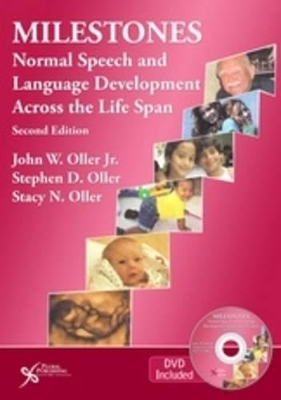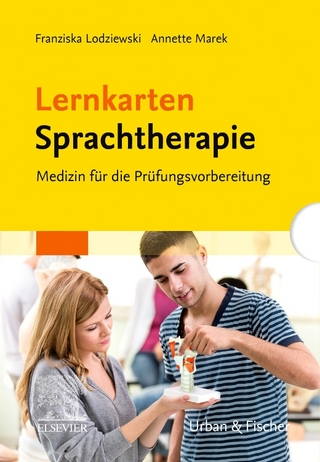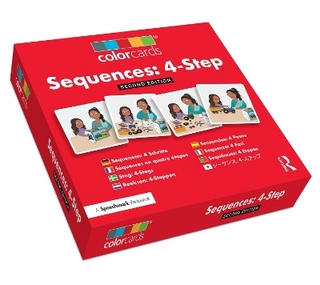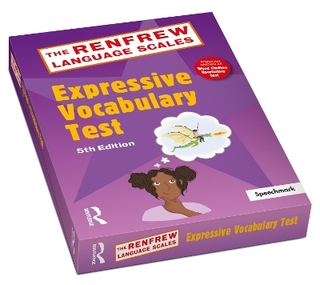
Milestones
Plural Publishing Inc
978-1-59756-501-1 (ISBN)
Milestones: Normal Speech and Language Development Across the Lifespan is a textbook for the introductory course in Language Development for students in Speech-Language Pathology, Communication Disorders, Special Education, Educational Psychology and Education. It adopts a coherent chronological approach, beginning with responsiveness to speech and language in the womb and working across the lifespan into maturity and beyond. By using a chronological organization, the text helps students relate the material to the whole person at each milestone. It takes a constructive approach, starting with the simplest theoretical apparatus of the youngest infant, gradually increasing in complexity and comprehensiveness one milestone at a time. The organizational background becomes a series of narratives of interesting cases, keeping the theory and structure of language development grounded in real stories. In the second edition, the authors have enhanced and updated the cutting-edge information on early language development, literacy acquisition, and some of the factors that can delay or even derail the normal progression.They have amplified innovations that students found useful in the first edition while updating the text with respect to current research and theory.
The organization of the text has been streamlined, and some of the theory and research has been clarified and illustrated with additional or updated videographic illustrations.The digital resources on the second edition DVD-ROM include: A complete Digital Summary of the whole book together with hyperlinked media and Internet resources referred to in the book A well-illustrated PowerPoint summary of each chapter with one or more videographic clips for every class meeting A Study Guide of Multiple Choice Questions containing 1,000 items (400 more than in the prior edition) linked in sequence, page-by-page and chapter-by-chapter, to the subject matter in the text A series of 10 Discussion Questions at the end of each chapter A digitally searchable Glossary of Technical Terms also containing brief biographies of major theoreticians, researchers, and innovators A searchable list of all the published and Internet references in the book An extensive index The foundational chronology of basic milestones of development is essential information for speech-language pathologists and for educators working with preschoolers, as well as obstetricians, pediatricians, nurses, and professionals in the health sciences.
The second edition of Milestones continues to lead the way in bringing this crucial information to successive new generations of students and future clinicians.
John Oller, Jr., Ph.D. John W. Oller, Jr., Ph.D., has given a lifetime of study to language acquisition. He began his work as a professor at the University of California in Los Angeles. He went on to found the Department of Linguistics at the University of New Mexico and the Applied Language and Speech Sciences Ph.D. Program at the University of Louisiana. Stephen Oller, Ph.D. Stephen D. Oller, Ph.D., is an associate professor in the Communication Sciences and Disorders Program (in the Department of Biological and Health Sciences) at Texas A&M University-Kingsville. Stacy Oller, M.S., CCC-SLP Stacy Oller, M.S., has been practicing as a pediatric Speech Language Pathologist for 10 years. She received her B.A. from Louisiana State University and her M.S. from the University of Louisiana, Lafayette.
Chapter 1. Development Across the Life Span Objectives Getting There Earlier Than Expected Language Systems and Their Grammars Intentional Actions Are Grammatical Principles of Development Common Ground: Where the Researchers Agree You Can Make a Difference Summing Up and Looking Ahead Study and Discussion Questions Chapter 2. Before and Just After Birth Objectives Actions Are Crucial to Development The Integration of Sensation and Movement Symbols: Emotion, Memory, Imagination, and Language Testing Sensation and Movement at Birth Connecting Language with Content Innate Language Capacity or Just Biomechanics? Cross-Modal Transfer and Integration of the Senses Summing Up and Looking Ahead Study and Discussion Questions Chapter 3. Language Acquisition theory Objectives Three Kinds of Work Distinguishing Forms of Speech Abstraction Abstracted Signs Enrich Experience Learning to Understand What You Don't Understand Making A Critical Distinction Summing Up and Looking Ahead Study and Discussion Questions Chapter 4. Entities That Move and Talk Objectives Coordinating Movements Solving the Forms of Significant Movements The "Nonverbal" Signs Needed for Words The Surprising Problem of Identities The Sign Cycle The Iconic Cycle of Abstraction The Indexical Cycle Abstracting and Generalizing to the Hypostatic Index Summing Up and Looking Ahead Study and Discussion Questions Chapter 5. Working Up to A Receptive Vocabulary Objectives Integrating the Nonverbal Signs with the Verbal Levels of Reference and the Logical Positions of Discourse Building Up to Tertiary Reference The Infant Uses All Three Positions of Discourse Indexes as the Connectors Discriminating Linguistic Symbols Gaining Motor Control of Surface-Forms Summing Up and Looking Ahead Study and Discussion Questions Chapter 6. From "One Word" to Grammatical Strings Objectives Reviewing What's Already Been Achieved Working Backward from the Goal What's an Argument The Growing Hierarchy of Sign Systems Moving Beyond Zero Order Predicates Zero Order Predicates Become Arguments Meaningful Questions About Words Emerge Summing Up and Looking Ahead Study and Discussion Questions Chapter 7. Pragmatics And Literacy Objectives From Surface-Forms to Pragmatics The First Symbols Are TNRs The Adult Level of Mature Reasoning A General Limit of Abstractness Obstacles to Success with Phonics Summing Up and Looking Ahead Study and Discussion Questions Chapter 8. Meaning Outranks Surface Form Objectives It's All About Meaning Meaning Enables Communication Whole Language Approaches The Critical Role of Narrative-Like Sequences Universals of Chronology Becoming Literate Is Cognitive Empowerment Achieving Ordinary Coherence Summing Up and Looking Ahead Study and Discussion Questions Chapter 9. Different Languages, Dialects, and Cultures Objectives Consequences of Language/Dialect Differences The Difference Between Languages and Dialects New Varieties Are Constantly Arising Language Varieties at School Evaluating Emotional, Social, and Cognitive Abilities Revisiting Disproportionality in LD and Gifted Classifications How to Achieve Valid Measurements, Assessments, and Judgments Nonprimary Language Instruction/Acquisition Methods That Work: Always Involve Pragmatic Mapping Summing Up and Looking Ahead Study and Discussion Questions Chapter 10. Development in Relation to Disorders and Dissolution Objectives The Theory of True Narrative Representations Classifications of Disorders The Milestones Scale of Development Parents as Diagnosticians Physical, Emotional (Social and Behavioral), and Mental Development Disorders Are Linked to Toxins Solving the Mystery Disorders Epidemic Autism, Alzheimer's, and Other Disorders Life, a Mystery: Mortality? Not So Much Summing Up and Looking Beyond this Book Study and Discussion Questions References Glossary of Terms Index of Authors, Subjects, and Technical Terms Appendix 1. Battery of Multiple Choice Test Questions Appendix 2. Battery of Multiple-Choice Test Questions: With Answers and Cross-References to Text
| Zusatzinfo | b/w illustrations |
|---|---|
| Verlagsort | San Diego |
| Sprache | englisch |
| Maße | 178 x 254 mm |
| Gewicht | 1111 g |
| Themenwelt | Medizin / Pharmazie ► Gesundheitsfachberufe ► Logopädie |
| ISBN-10 | 1-59756-501-6 / 1597565016 |
| ISBN-13 | 978-1-59756-501-1 / 9781597565011 |
| Zustand | Neuware |
| Haben Sie eine Frage zum Produkt? |
aus dem Bereich


